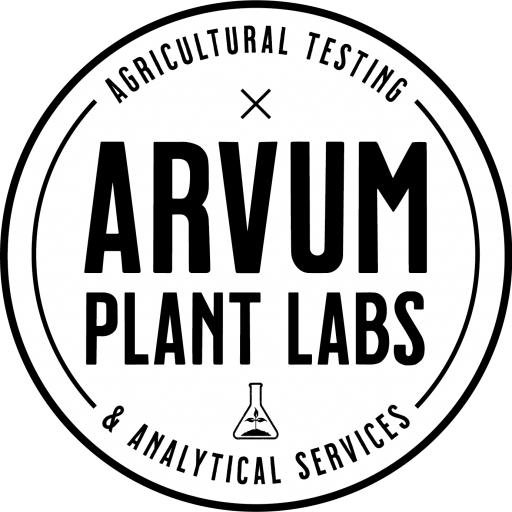Methods for Determination of Boron in Soil, Plant Tissue and Water Samples

Hello fellow cultivators! We’ve been talking about boron a lot this month (you can find the previous articles here) and hopefully you’ve had a chance to get in touch with us and take advantage of the free water and plant tissue tests that Arvum offers to all new customers. If you haven’t you should because that’s really good info to have.
For today’s post we thought it would be fun to get some insight from Josh, Arvum’s Director of Lab Operations, about how he and the amazing lab team at Arvum actually determine how much boron is in a sample. We asked him to go over the process for soil, water, and plant tissue. This is a little more lab science than cultivation science, but hopefully you will still find it interesting.
Methods for Determination of Boron in Soil
To determine the concentration of boron in a soil sample, the boron must first be extracted. There are several extraction methods for determining boron concentration in soil. Some of these include: the hot water soluble (HWS) test, total acid digestion, and saturated paste extraction. The boron present within the extract solutions is then commonly quantified via inductively coupled plasma optical emission spectroscopy (ICP-OES), ICP-mass spectroscopy (ICP-MS), or by spectrophotometry.
- The HWS test method involves the addition of water to a pre-dried and milled soil sample followed by boiling. The boron present in the extract is then quantified. The resultant concentration of boron obtained from the HWS Boron method may not be representative of the environmental concentration of boron in the soil available to the plants. Thus, the results of the HWS method are better aimed at determination of boron deficiency in plants, rather than toxicity.
- The total acid digestion method is performed by the addition of one or more acids and an oxidizer to a pre-dried and milled soil sample. The solution is heated, and the resultant extract is analyzed. Most native soils tested for boron by the total acid digestion analysis contain 5-30 ppm of total boron, of which only 1-3% is water soluble and bioavailable for plants to absorb.
- The saturated paste extraction method involves a slow addition of water to a soil sample to generate a saturated paste. The saturated paste is vacuum filtered, and the resultant extract is analyzed. This approach is considered to afford boron concentrations more representative of the boron available for plant uptake and can be used to evaluate toxicity. For soils tested by a saturated paste extraction method, boron concentrations less than 0.7 ppm are considered safe to sensitive plants, concentrations of 1.5 – 4 ppm are considered toxic to most plants, and above 4 ppm, is toxic to all plants.
Methods for Determination of Boron in Plant Tissue
There are a couple of different methods for determining the amount of boron present in plant tissue. There’s the dry ash method and the acid digestion method. In both methods, the prepared sample is typically analyzed by ICP-OES.
- In the dry ash method, a pre-dried, homogenized plant material sample is burned until it turns to ash, that ash is dissolved in acid and deionized water, and then analyzed for boron. This method works for boron and many other analytes, but is not suitable for volatile elements.
- For the acid digestion method, we dry and homogenize the plant material, add it to a container with some acid (and sometimes an extra ingredient to help the process), and then heat it up. This method lets us measure boron and a bunch of other nutrients too. However, it might not be perfect for elements like silicon, aluminum, and selenium.
Methods for Determination of Boron in a Water Sample
To find out how much boron is in water, a process called colorimetric analysis can be used. For this approach, a special chemical such as azomethine-H is added to a water sample. If boron is present, it forms a complex that results in a color change. A spectrophotometer is then used to measure how much of a color change has happened, which tells us how much boron is in the sample. For a more detailed look, water samples can be analyzed using an ICP-OES or ICP-MS. Before they do this, they filter the water to remove any particles and add a little acid to ensure accurate measurement of not just boron but other analytes in the water too.
Thanks for taking time to read this article! If you’d like to know the nutrient composition of your soil, water, and plant tissue please get in touch. Arvum Plant Labs offers all new customers a free round of testing.
Call us at 707-398-8346 or email sales@arvumplantlabs.com and take the first step towards optimal plant performance.







